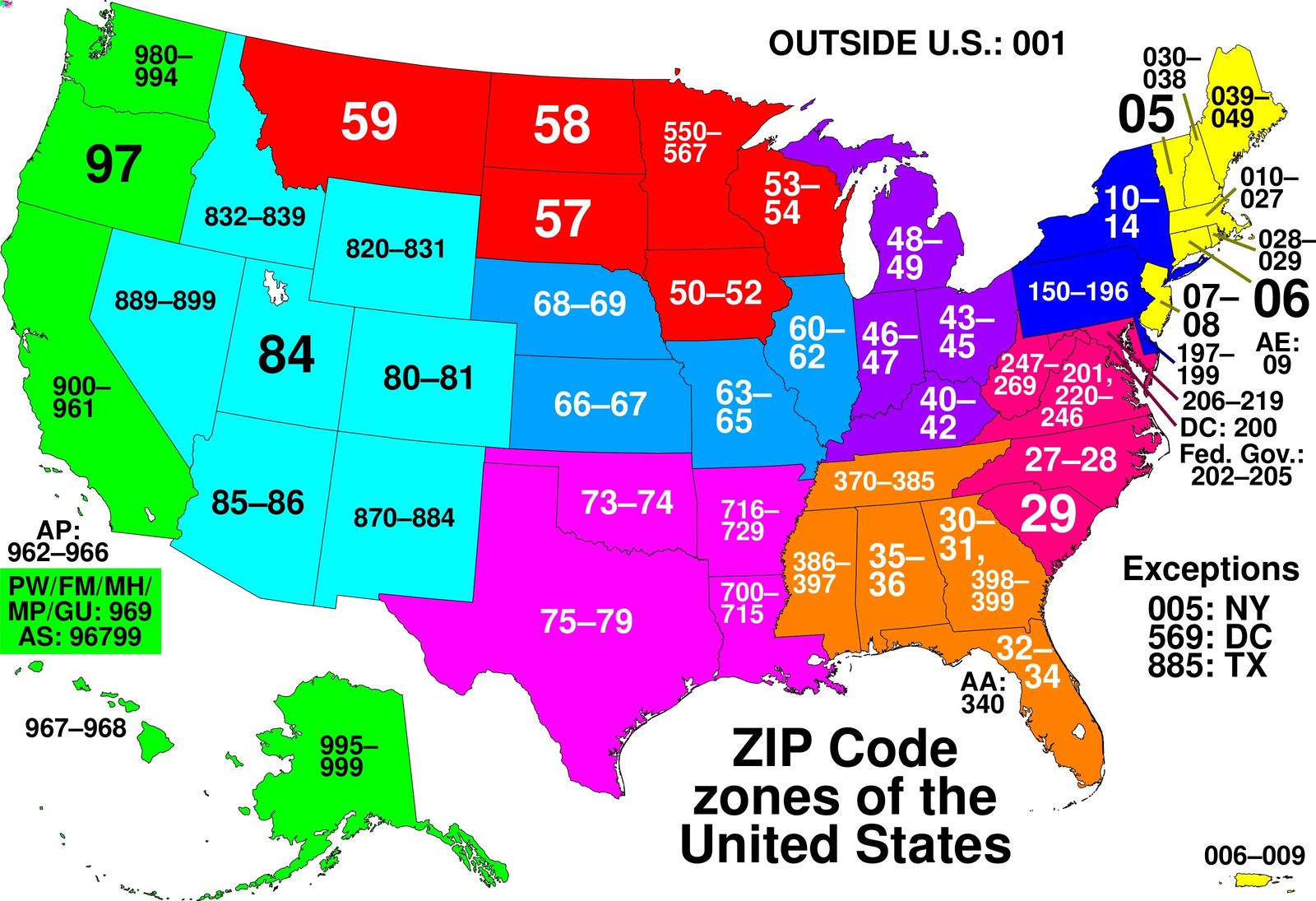
Postal codes, also known as ZIP codes in the United States, are essential for sorting and delivering mail efficiently. Did you know that the first postal code system was introduced in Ukraine in 1932? These codes have since become a global standard, helping to pinpoint locations with incredible accuracy. From the quirky "00000" in the United States to the unique alphanumeric combinations in the UK, postal codes are more than just numbers. They can reveal fascinating details about geography, history, and even culture. Ready to dive into 50 intriguing facts about these indispensable digits? Buckle up for a journey through the world of postal codes!
Key Takeaways:
- Postal codes are unique combinations of letters and numbers used to sort and deliver mail efficiently. They have interesting histories and are essential for technology, culture, and the future of mail delivery.
- Different countries have their own postal code systems, each with its own rules and patterns. Postal codes reflect cultural and societal aspects and continue to evolve with advancing technology.
What Are Postal Codes?
Postal codes are essential for sorting and delivering mail efficiently. They help postal services pinpoint exact locations, ensuring timely delivery. Here are some fascinating facts about postal codes.
-
The first postal code system was introduced in Ukraine in 1932. It was later abandoned in 1939.
-
ZIP codes in the United States were introduced in 1963. ZIP stands for "Zone Improvement Plan."
-
Canada's postal codes use a combination of letters and numbers. They were introduced in 1971.
-
The UK postal code system is one of the most detailed in the world. It can pinpoint a location down to a few houses or a single business.
-
Germany's postal codes were unified in 1993 after the reunification of East and West Germany.
How Postal Codes Work
Postal codes are more than just random numbers and letters. They follow specific patterns and rules to ensure accuracy and efficiency.
-
In the US, ZIP codes start with a digit that represents a group of U.S. states.
-
Canadian postal codes alternate between letters and numbers, starting with a letter.
-
UK postal codes begin with one or two letters representing the area, followed by numbers and sometimes more letters.
-
Australian postal codes are four digits long, with the first digit representing the state or territory.
-
Japanese postal codes are seven digits long, divided into two parts: a three-digit and a four-digit section.
Interesting Postal Code Facts
Postal codes have some unique and surprising aspects. Here are a few that might surprise you.
-
The Vatican City has the smallest postal code system in the world: 00120.
-
In Norway, the highest postal code is 9991, assigned to a remote area in the Arctic.
-
French overseas territories have their own postal codes, starting with 97.
-
Greenland's postal codes start with 39, despite being part of the Kingdom of Denmark.
-
In India, postal codes are known as PIN codes, which stands for Postal Index Number.
Postal Codes and Technology
Technology has significantly impacted how postal codes are used and managed.
-
Geocoding uses postal codes to convert addresses into geographic coordinates.
-
Online shopping relies heavily on accurate postal codes for delivery.
-
GPS systems often use postal codes to help users find locations.
-
Postal code databases are used by businesses for marketing and demographic analysis.
-
Machine learning helps postal services predict and manage delivery times based on postal codes.
Fun Facts About Postal Codes
Postal codes can be fun and quirky too. Here are some light-hearted facts.
-
Santa Claus has his own postal code in Canada: H0H 0H0.
-
Easter Island has the postal code 2770000, despite its remote location.
-
In the UK, the Queen's residence, Buckingham Palace, has the postal code SW1A 1AA.
-
Beverly Hills is famous for its 90210 ZIP code, thanks to the TV show.
-
In Germany, the postal code 12345 is assigned to a small town called Berlin.
Postal Codes Around the World
Different countries have unique postal code systems tailored to their needs.
-
In Russia, postal codes are six digits long, with the first three digits representing the region.
-
Brazilian postal codes are known as CEPs and are eight digits long.
-
South African postal codes are four digits long, with the first digit representing the province.
-
In Italy, postal codes are five digits long, with the first two digits representing the province.
-
China's postal codes are six digits long, with the first two digits representing the province.
Historical Postal Codes
Postal codes have a rich history that reflects the evolution of postal services.
-
The first postal code in the UK was introduced in London in 1857.
-
Germany's postal code system was first introduced in 1941 during World War II.
-
Japan's postal code system was introduced in 1968 to modernize mail delivery.
-
Australia's postal codes were introduced in 1967, replacing an older system.
-
India's PIN code system was introduced in 1972 to simplify mail sorting.
Unique Postal Code Systems
Some countries have unique postal code systems that stand out.
-
In the Netherlands, postal codes are six characters long, with four digits followed by two letters.
-
South Korea's postal codes are five digits long, introduced in 2015 to replace the older six-digit system.
-
In Singapore, postal codes are six digits long, with the first two digits representing the sector.
-
New Zealand's postal codes are four digits long, introduced in 2006 to improve mail sorting.
-
In Saudi Arabia, postal codes are five digits long, introduced in 2005 to modernize the postal system.
Postal Codes and Culture
Postal codes can also reflect cultural and societal aspects.
-
In Japan, postal codes are often used in addresses for ceremonial purposes.
-
In the UK, postal codes are sometimes used to determine school catchment areas.
-
In the US, ZIP codes can influence property values and insurance rates.
-
In Canada, postal codes are used to analyze demographic trends and voting patterns.
-
In France, postal codes are often used in marketing to target specific regions.
The Future of Postal Codes
As technology advances, postal codes continue to evolve.
-
Digital addresses are being developed to replace traditional postal codes.
-
Smart mailboxes use postal codes to notify recipients of deliveries.
-
Drones may use postal codes for precise delivery locations in the future.
-
Blockchain technology could be used to create secure, tamper-proof postal code systems.
-
Augmented reality might help postal workers visualize delivery routes based on postal codes.
Postal Codes: More Than Just Numbers
Postal codes aren't just random digits; they hold a wealth of information. From their origins in WWII to their role in modern logistics, these codes streamline mail delivery, enhance security, and even influence marketing strategies. They help pinpoint locations, making it easier for businesses to reach customers and for emergency services to respond quickly. Postal codes also reveal interesting cultural and historical insights about regions. Whether you're sending a letter across town or ordering a package from another country, postal codes ensure everything gets where it needs to go efficiently. Next time you jot down a postal code, remember the fascinating system behind those simple numbers. They’re a small but mighty part of our daily lives, connecting us in ways we often take for granted.
Frequently Asked Questions
Was this page helpful?
Our commitment to delivering trustworthy and engaging content is at the heart of what we do. Each fact on our site is contributed by real users like you, bringing a wealth of diverse insights and information. To ensure the highest standards of accuracy and reliability, our dedicated editors meticulously review each submission. This process guarantees that the facts we share are not only fascinating but also credible. Trust in our commitment to quality and authenticity as you explore and learn with us.


